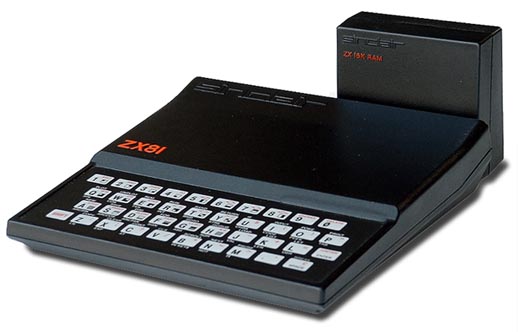Swiftly carrying on from the previous games history blog, I'd like to re-instate that the things I mention are what I think are the main chunks, and there is much more to talk about.
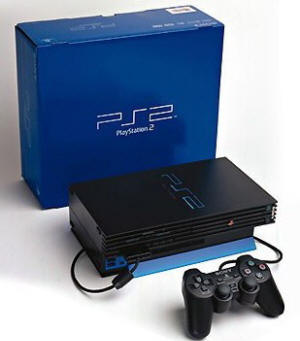 |
| Sony's Playstation 2 |
Let's get stuck in with the Sony Playstation 2. On the 4th of March 2000, Sony released the brand new console to the Japanese market, hitting 1 million units in just 2 days; the demand was higher than expected, resulting in some customers not receiving the product they pre-ordered. Amazingly, this shortage also meant that the PS2 was a hot, but scarce product, some were being sold for outrageous prices on Ebay! In addition, some Playstation units were sold with defective memory cards, meaning that because the DVD drivers were on the cards, DVDs could not be played. Although, the US PS2's were built with the code, so it didn't need a card. - Ref 1.
The PS2 was amazing, it had backwards compatibility, could play DVDs & CDs, and the specs meant that the graphics of the new & upcoming game were a vast improvement on any previous consoles. The initial launch was patchy (as it usually is with new consoles), and Sony was also worried about the design of the "emotion chip" making it a difficult experience for developers to make games, and therefore opened help forums/assistance websites to help. - Ref 2
 |
| Nintendo 64 - Pikachu Edition |
Moving from Sony to Nintendo, Nintendo announce the release date of the GameBoy Advance. Originally supposed to appear in the fall of 2000, is now changed to 2001. Plus, developers for Nintendo are frustrated when the development kits for the "Dolphin" (Later renamed to "Gamecube"), haven't been received. The console was scheduled for 2000, and it takes 4 months for Nintendo to say that the console would not be released that year. On the bright-side, Nintendo does end up releasing another console, or, modified one at least. The Pikachu N64! I owned one as a child and it still works to this day... These things are built to last.
Nintendo also get into a little lawsuit with "Songboy.com". This was because they felt that Songboy was infringing intellectual property laws, and therefore, Nintendo refused their application to become licensed with them, and instead, wanted to sue them. Although, they arrange a deal whereby Songboy changes their name to "Song-Pro", and everything will be fine. Song-pro go on to become a licensee, and continue to make their product which allowed Gameboy users to save & playback 1 hour of music from the games, plus download some through a USB cable, sourced from the internet. - Ref 1.
 |
| Sega's Dreamcast Logo |
In other matters, the Xbox is officially announced - not as if no-one knew anyway, and in terms of the PC, "The Sims" becomes the best-selling computer game, reaching out to the female market. There were other simulation games before this back in 89 & 91, but this was by far the best. - Ref 3. Sega goes through more troubles with sales for the Dreamcast, and a new head named Isao Ohkawa takes over the company.
Many rumours about Sega's involvement with the games industry surface, and end up saying that that will support the competing consoles, but also focus on other electronics more than the Dreamcast. This becomes true, and discontinue production later in January 2001. - Ref 1.
 |
| The Xbox release day on Nov 14th - Time Square |
Here's another 'biggy': In 2001, Microsoft shows off the 'Xbox' at the Consumer electronics show (CES), and that 12-20 games will be ready at launch. Some of these game are: "Tony Hawk's Pro Skater", "Oddworld" and "Malice". Games in development include: "Metal Gear Solid" and "Crash Bandicoot". - Ref 1. In my opinion, Crash Bandicoot was such an amazing franchise, and I especially loved 'The wrath of cortex', great gameplay, fun all the way through, and one my favourite games of my childhood - I would highly recommend playing it if you haven't already! In addition, a game considered by many to be the best game on the Xbox: "Halo: Combat Evolved", was released in November/at launch of the Xbox. It quickly becomes the best selling launch game. - Ref 1.
As previously mentioned, 2001 was the year that Sega discontinued the Dreamcast. Not long before this though, they released the first online-compatible version of the RPG "Phantasy Star", which allowed thousands of players to play together from anywhere in the world. - Ref 1.
Still during 2001, Microsoft gets tied up in a lawsuit with "Xbox Technologies" for the rights to the name. Whilst the struggle between Sony and Connectix come to and end and agree to work together, with Sony getting all of the PS emulation technology. In addition, sales of the PS2 reach 10 million units sold, which is incredible considering the PS1 took 3 times longer to reach this figure, and that alone was something to behold. - Ref 1.
 |
Nintendo's Gameboy Advance SP -
Released 2 years after the GBA |
Nintendo keep plowing through with more releases of successful products. This one being the GameBoy Advance; to be released in March this year with a retail price of $99. The GBA was an improvement on the GBC graphically, and supposedly aesthetically too - but this is to personal preference. The layout changed from the square screen and buttons underneath, to a horizontal one (widescreen if you will), and the buttons placed more like a console's controller. - Ref 4. I think this was far more comfortable than the GBC, but still loved the idea of the original. Nintendo wasn't done with the improvements though, just 2 years later they released the GBA - SP. Both of these products were backwards compatible, but the SP included a backlight, was smaller, and the design was changed to a 'flip' style which protected the screen. - Personal Experience. All I can remember doing on these 3 handheld devices was playing Pokemon, all day, and a lot of evenings during primary school. They were so much fun, in fact I'd love to try and find my old games and play them asap!
As well as these products, Nintendo released the Nintendo 'Gamecube' on November the 18th. Technically, the Gamecube was more powerful than the PS2, but this wasn't really considered when in competition with the other 2 'big dogs'. It didn't use DVDs for its games, instead a proprietary optical disc was used which has smaller memory and was smaller in size. - Ref 6. The Gamecube was far from a failure, but it certainly didn't compete much with Sony or Microsoft's products.
Sadly, even though it isn't considered significant, Midway Games leaves the coin-operated arcade market for the console industry. Over the next decade/until the present day, arcades are still dotted around, but are slowly dying out, and nowadays a lot of people forget that the arcade industry was once the pinnacle of the gaming industry.
Now, you wouldn't have thought so, but the tragic events of September 11th in 2001 impacted on soon to-be-released games, and the type of content that other developers include in future projects. These examples include: Spider-Man 2 being delayed to remove a scene where he was standing on a building that appeared similar to the World Trade Centre, Command & Conquer Yuri's revenge packaging altered to remove images of US landmarks under attack, a mission which referenced terrorists in GTA 3, and Flight simulator 2000/02 were altered to remove the World Trade Centre. There are more implications however. - Ref 1 & Ref 5.
 |
| Steam's Logo |
Transitioning into 2003, the now extremely popular "Steam" software was born into the marketplace. 'Valve' pushes forward into the PC gaming market by creating a "digital distribution platform" which lets anyone with a computer and and internet connection purchase games online and play them with all the latest patches & DLC. They are also well known these days for having huge discounted games on sale.
Also, on October 29th 03, the gaming franchise that has evolved and continued to impress/generate massive profits for many years was born: 'Call of Duty'. There is a big divide in today's market between COD, Halo, Battlefield, and neither. Obviously there are some that don't mind as long as they play something, but I know a lot of people are sick of hearing COD, so I won't go into details. - More information at ref 7. Although, since COD4, each title has sold more than 10 million copies, and it is still growing to date. I think the main reason is because people see it as the same game, just different places/graphics - I still appreciate the work that has gone into making them, and enjoy playing it occasionally (Sorry if this offends you).
 |
| Nintendo DS - Dual Screen |
Come 2004, despite Nintendo lacking in the console department I.e. The Gamecube, they still remain 'top dog' in the handheld market. The 'Nintendo DS' was released to North America on Nov 21st, and it was a huge improvement for handheld gaming because it featured a touch screen for menus and miscellaneous game functions, another screen for the actual main game, 2 processors, and improvements graphically, allowing for 3D rendering - Not to forget the backwards compatibility! (Always a luxury to have). It was massively popular, especially with games such as: The Legend of Zelda: Spirit Tracks, & Phantom Hourglass, Pokemon, Mario Kart DS, Animal Crossing etc. - Ref 3, 8, & 9 (Also check out ref 10 for popular DS games if interested). Plus, see ref 13 for a very interesting insight into Hiroshi Yamauchi, former Nintendo president. Later in 2011, Nintendo also released the '3DS', incorporating the newly introduced 3D technology to the handheld device. Don't get me wrong it would be amazing, but there has been so many complaints that it hurts some people's eyes, and even though it has improved a bit more since 2011, it still isn't completely fantastic (Although it is still developing!) Another interesting point to note here is that the Nintendo DS & 3DS look like a cross between the width & button layout of the GBA, and the flip mechanism on the GBA SP.
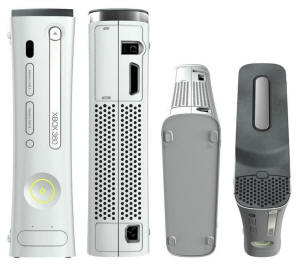 |
| Microsoft's 'Xbox 360' |
2005 dawned Microsoft's next brand new console, the "Xbox 360". This amazing new piece of kit was smaller, had wireless controllers, far more powerful, could play DVDs/CDs, interchangeable external hard drives, and much more. The console launched in the US on Nov 16th, Europe on Dec 2nd, and Japan on Dec 10th. The initial retail price for the full system was $399, but you could purchase one without the hard drive & controllers for $299 (But what would be the point in that?!). In terms of the specs, it included a speedy 3.2 GHz processor, and 512 MB of RAM. For more info of this, please visit Ref 11. Over the next few years, the first versions/original 360's encountered many problems but the biggest one by far was the infamous "Red Ring of Death" - rrod. Although there are many reasons why this occurs, the main reason was overheating. Since it's release, Microsoft has made a lot of improvements/updates on the original console, fixing many issues including the 'rrod', and making aesthetic improvements, and hardware improvements I.e. bigger Hard drives; other versions include the Xbox 360 Slim, Arcade, Pro, and Elite.
Even though you could play online with the PS2, and original Xbox, it wasn't until the 360 and Playstation 3 came out that there was such a massive development in the online sector - In terms of games, and the online systems such as Xbox Live and the Playstation Network.
 |
| Sony's Playstation Portable/PSP |
Sony also released a new device this year, the "Playstation Portable" (PSP). To check it out in detail see ref 12. It's considered a multi-media device, and it is actually really good for music, pictures, browsing the internet, and of course, playing games. It uses MiniCD as the choice for playing games on and actually has some rather fun games on. It by no means competes with the Nintendo DS in the long run, but despite both being handheld gaming devices, the PSP tried to do more things, but the DS focused on the game aspect. Part of the reason why the DS just beats the PSP in general is down to the titles released exclusively to the DS. Just like all new devices, the PSP has a few revisions including the PSP Slim, PSP Go, Vita.
2006 was a big year for the gaming industry. If you couldn't tell already, the main companies which are thriving in the games industry and diving through mounds of profit are: Sony, Microsoft and Nintendo. Almost all other competition has been killed off, unable to compete with the fast growth and huge popularity of these companies. Steam is still going strong also, and it doesn't look as if it will pass, especially now in 2013, as it has become a 'must have' if you're a PC gamer. It's fast, easy, and straight forward to manage all of your games.
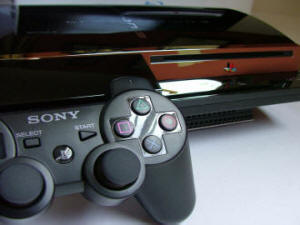 |
| Sony's Playstation 3 |
Sony's Playstation 3 sprung into action in Japan & the US Nov 2006, but didn't hit the UK until March 2007! The PS3 had technically better specs than any other console on the market at the time (To see full info visit ref 14), as well as exclusive game titles released solely on the Playstation. From this point onwards to this day, people argue over which console is better; the PS, or the Xbox? Free online service & graphically better gaming, or a multimedia device with reasonable graphical capabilities but a paid service. There are of course other pros & cons for each console, but this has divided many gamers across the globe.
 |
| The Nintendo Wii |
Approaching a different route from the general trend of consoles, "The Nintendo Wii bucked the trend for power and resolution by producing what was essentially a new way to play video games." - Ref 15,
New electronics. (26th June 2012). From Pong to Wii: four decades of computing gaming. 4. By using a motion sensor and accelerometers in order to interact more physically with the game. The extremely popular 'Wii Sports' was a very basic but 'family fun' game which included simulation games of: Bowling, Tennis, Boxing, Golf & Baseball. Ref 15, page 4 of the article gives a very nice overview on these new consoles. For example, "Gaming has returned to its roots" - On the one side, you have a fun/novelty orientated console in which you can play 'TV tennis', appealing to many families & people in general, on the other you have consoles with much higher processing power and focusing on immersion.
Nintendo Later released the 'Wii U' in Novemeber 2012, and it combines what appears to look like a tablet/controller, with the motion sensors, accelerometers, and usual Wii controllers. It brings a revamped way of gaming interactively, and looks promising for the future.
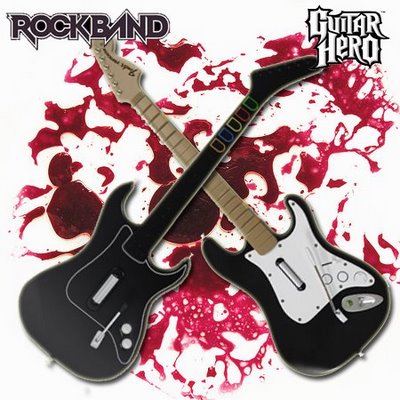 |
| Rock Band, or Guitar Hero? |
2005 & 2007 was the dawn of a short-lived reign of 'Rhythmic Gaming', with Activision's Guitar Hero & Harmonix's Rock Band battling it out to be on top. Both games were different in their own ways, but essentially are the same thing; you pick up a plastic instrument calibrated with the system and play along to a song. What is specifically fascinating about this genre of games is that at one point, they were advertised everywhere, people couldn't stop talking about their high scores, and they sold millions of copies. Before you even realised it, they had pretty much dissipated and gone from the industry! Imagine that, a whole genre born and gone in just less than a decade. Incredible.
 |
| Popular mobile game 'Angry Birds' |
Also in 2007, Apple's 'I-Phone' came out. With a clean design, multimedia capabilities, and pretty much a condensed version of a computer in your pocket; apps quickly became a new way to do a wide variety of things... Including games. Since then, the app market has continued to develop and grow into novelty games as well as more sophisticated games for the 'smartphone' market. Probably the obvious example of app-based games is 2009's 'Angry Birds'. Angry Birds was such a big success, it's become a whole new thing to buy & sell products with or relating to Angry Birds on them. The app market now is so big and it's the cheapest way to get an indie developer off the ground; granted you have a quality product and a bit of luck.
 |
The famous 'Grass block'
- An image representing Minecraft's concept |
This brings me to the next huge game by an indie developer (Markus Persson) and released in 2010. - Ref 3. This massively popular game grew overnight and initially consisted of just a few different types of blocks in a world in which the player has to gather resources, explore, and survive the creatures. Another example of simplicity appealing to the masses. Exclusive to the PC only at first, by popular demand the game was converted and made available to download on the Xbox-Live marketplace. It's amazing to think it's usually the basic but 'creative' products make the most money as it appeals to such a large market.
In addition, PC gaming is stronger than ever and the vast variety of online games that are available to us just never seems to stop expanding. In 2008, the MMORPG 'World of Warcraft' saw more than 10 million subscribers join the fantasy world which everyone can connect to. - Ref 3.
 |
| Skyrim's Logo |
Further emphasising the pure power of 3D graphics for games in 2011: 'Elder scrolls V: Skyrim'. This visually stunning game is an absolute joy to play. From the game mechanics to the textures, you just don't want to stop playing. I've consistently found myself just climbing to heights and admiring the absolutely beautiful made world. There are of course other game of this time which were technically more visually realistic, but Skyrim was a big influence and at the time, one of the most talked about games on this decade. Unfortunately, the developers have announced in 2013 that they won't make any more downloadable content for users according to ref 16.
After a whole 7-8 years since Sony's Playstaion 3 and Microsoft's Xbox 360 was released, in Novemeber 2013, the next-gen consoles were released to the public. The Xbox One was the first to be released on Nov 22nd, followed by the Playstation 4 on Nov 29th. Recent news from Microsoft about the Xbox One say that in just 18 of the launch date, 2 million units have been sold. In comparison, Sony say they sold 1 million units on the launch date, and over 2.1 million to now. These kinds of sales are astonishing when you look at the launch price for both consoles at launch: Xbox One, £429.99 (Console only), PS4, £349.99 (Console only).
 |
| Microsoft's Xbox One |
 |
| Sony's Playstation 4 |
VS.
I refuse to get into the whole 'console wars' debate, so I won't. Although, If you want to compare and see the specs/news up until this point, see ref 17 and 18.
Xbox One has differentiated itself from the PS4 by trying to be an "all-in-one" device (hence the name) so that you can essentially do a lot of things which a PC can do. Whereas, the PS4 focuses on gaming the most, and the other features similar to the Xbox e.g. Internet browsing, are add-ons, but they aren't necessarily a primary focus for the console.
Both consoles currently have a lot of amazing games yet to be released, to see a list of the exclusives + games available on both, see ref 19. A few examples: Dead Light, Forza 5, Dead Rising 3, The Elder Scrolls: Online, The Witcher 3: The Wild Hunt. I say they are amazing, but that's based on the trailers, and even though they can be deceptive, the storylines, mechanics, and environments all look wonderful, so I reckon we are in for a treat!
Thank-you for following what I think are the main parts of video gaming history. We close 2013 with 2 'next-gen' consoles being released, big titles have been announced, and everything from here on out looks absolutely fantastic. The story lines sound thrilling, the art/environments appear visually stunning, and I really cannot wait to see how more history is made - we are currently at the peak of this gaming mountain, now let's sit back and be proud of how far we've gotten, and look to how far we can go!
References:
1-
Leonard Herman, Jer Horwitz, Steve Kent, Skyler Miller. (2002). The history of video games.
2-
http://www.videogameconsolelibrary.com/pg00-playstation_2.htm#page=reviews
3-
http://www.icheg.org/icheg-game-history/timeline/
4-
http://www.cyberiapc.com/vgg/nintendo_gameboysp.htm
5-
http://www.rockstargames.com/newswire/article/19981/grand-theft-auto-iii-your-questions-answered-part-two-911-the-gh.html
6-
http://www.1up.com/news/nintendo-gamecube-ten-years-old
7-
http://www.giantbomb.com/call-of-duty/3025-82/
8-
http://www.howstuffworks.com/nintendo-ds.htm
9-
http://content.time.com/time/interactive/0,31813,2029221,00.html
10-
http://www.officialnintendomagazine.co.uk/43417/best-ds-games/?page=2
11-
http://www.videogameconsolelibrary.com/pg00-xbox_360.htm#page=reviews
12-
http://psp.about.com/od/hardwarefirmware/a/Psp-Specifications-for-all-models.htm
13-
http://www.usgamer.net/articles/hiroshi-yamauchi-the-iron-fist-in-the-velvet-glove
14-
http://www.videogameconsolelibrary.com/pg00-ps3.htm#page=reviews
15-
New electronics. (26th June 2012). From Pong to Wii: four decades of computing gaming. 4.
16-http://gamingdecoded.com/2013/04/15/no-more-skyrim-dlc-to-be-developed-by-bethesda/
17-
http://www.knowyourmobile.com/microsoft/microsoft-xbox-one/21447/xbox-one-release-news-specs-and-features
18-
http://www.knowyourmobile.com/games/sony-ps4/21476/ps4-release-date-launch-price-and-availability-best-console-yet
19-
http://uk.ign.com/wikis/xbox-one/PS4_Games_vs_Xbox_One_Games
Image References:
-http://www.videogameconsolelibrary.com/images/2000s/00_Sony_PS2/ps2-dw-top.jpg
-
http://files.doobybrain.com/wp-content/uploads/2012/12/nintendo-64-pikachu-version-.jpg
-
http://seeklogo.com/images/S/Sega_Dreamcast-logo-AD899CD36E-seeklogo.com.gif
-
http://www.digitaltrends.com/gaming/the-history-of-the-xbox/
-http://www.tophostgames.com/wp-content/uploads/2013/09/gameboy-advance-spgame-boy-advance-sp-on-tumblr-ajs627md.jpg
-http://www.rarecandies.com/wp-content/uploads/2013/01/Steam.jpg
-http://images.eurogamer.net/2013/usgamer/Yamauchi-3.jpg/EG11/resize/1260x-1/format/jpg
-http://www.videogameconsolelibrary.com/images/2000s/05_MS_Xb_360/Xbox_360_Complete_small1.jpg
-http://0.tqn.com/d/psp/1/G/2/3/-/-/blackpsp.jpg
-http://www.videogameconsolelibrary.com/images/2000s/06_Sony_PS3/PS3_console_close-up.jpg
-http://www.videogameconsolelibrary.com/images/2000s/06_Nintendo_Wii/Wii_Sys_Colors_LG.jpg
-http://www.gabitogrupos.com/MIDIS_Y_KARAOKES/images/guitar_hero-vs-rock_band2.jpg
-http://cdn.imore.com/sites/imore.com/files/images/stories/2012/04/angry-birds-free-iphone-hero.jpg
-http://cdn2.planetminecraft.com/files/resource_media/screenshot/1333/minecraft_grass_cube_by_qemarar-d34vst3_6169445.jpg
-http://media.edge-online.com/wp-content/uploads/edgeonline/2013/05/XboxOne1.jpg
-http://wololo.net/wagic/wp-content/uploads/2013/11/PlayStation4-FeaturedImage.jpg























